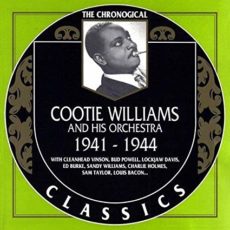
Daily Dose Of Jazz…
Charlie Holmes was born on January 27, 1910 near Boston, Massachusetts. He began playing alto saxophone at age 16 and emulated the style of his childhood friend, Johnny Hodges. He began playing professionally a week later and after moving to New York City he worked for a variety of groups, including Luis Russell in 1928.
Between 1929 and 1930 he recorded with Red Allen and is best known for composing Sugar Hill Function. He would work with Russell again a few times and in 1932 joined the Mills Blue Rhythm Band. He was a member of John Kirby’s Sextet, Cootie Williams’ Orchestra, and Louis Armstrong’s band for much of the next two decades. He left music in 1951 and did not return for twenty years, only to work in Clyde Bernhardt’s Harlem Blues & Jazz Band and later played for the Swedish band Kustbandet.
Never taking on the role of a leader in any recording or group, swing era saxophonist Charlie Holmes, who also played clarinet and oboe for the Boston Civic Symphony Orchestra, passed away on September 19, 1985 in Stoughton, Massachusetts.
More Posts: bandleader,clarinet,history,instrumental,jazz,music,oboe,saxophone
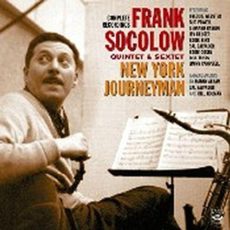
Daily Dose Of Jazz…
Frank Socolow wa born on September 18, 1923 in New York City and began his career in the early 40s playing in swing bands led by Georgie Auld, Ted Fio Rito, Roy Stevens, Van Alexander and Shep Fields. In 1944 he landed the first of three stints that spanned into the late Fifties with the Boyd Raeburn Orchestra and recording a number of records.
1945 saw Frank recording his first of two sessions as a leader with Freddie Webster and a young Bud Powell for Duke Records. He would go on to join Buddy Rich’s short-lived big band, toured Scandinavia 1947-48 with Chubby Jackson, then joined Artie Shaw’s big band 1949-50. Throughout the late 40s and the 50s he recorded with a wide variety of artists including Johnny Bothwell, Charlie Ventura, Gene Krupa, Sal Salvador, Maynard Ferguson, Terry Gibbs, Phil Woods, Cecil Payne, Manny Albam, Hal McKusick, Johnny Richards, Bill Russo, Joe Morello, and Bobby Scott.
His second record session as leader and only full album release, Sounds by Socolow, came in 1956 for Bethlehem Records, with arrangements by Bill Holman, Manny Albam, and Sal Salvador, the latter also contributing guitar. Tenor saxophonist and oboist Frank Socolow passed away on April 30, 1981 in New york City.
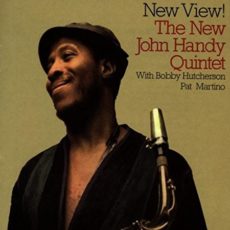
Daily Dose Of Jazz…
John Richard Handy III was born on February 3, 1933 in Dallas, Texas and first came to prominence while working with Charles Mingus in the 1950s. By the 1960s, he was leading several groups, among them a quintet with violinist Michael White, Jerry Hahn on guitar, Don Thompson on bass, and drummer Terry Clarke. This group’s performance at the 1965 Monterey Jazz Festival was recorded and released as an album and he received Grammy nominations for jazz performance of Spanish Lady and jazz composition for If Only We Knew.
As an educator Handy has taught music history and performance at San Francisco State University, Stanford University, the University of California, Berkeley, the San Francisco Conservatory of Music, and other schools.
The 1980s saw John working on the Mel Martin project Bebop & Beyond, recording tribute albums to Dizzy Gillespie and Thelonious Monk. He has recorded some eighteen albums as a leader for Roulette, Columbia, Impulse!, Warner, MPS, Milestone, Koch Int’l and Boulevard record labels. He has had one compilation released of selections from In The Vernacular and No Coast Jazz, and and has recorded two albums with Brass Fever, as well as, five albums during his time with Mingus.
Alto saxophonist John Handy, who also plays tenor and baritone saxophone, saxello, clarinet, oboe and sings, continues to perform and record.
#preserving genius
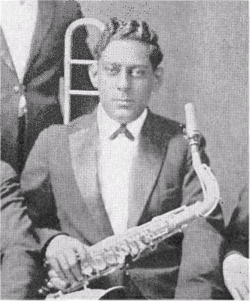
Daily Dose Of Jazz…
Lorenzo Tio Jr. was born on April 21, 1893 in New Orleans, Louisiana and raised in Bay St. Louis, Mississippi. Following in the footsteps of his father Lorenzo Sr. and his uncle Louis “Papa”, he also became a master clarinetist. Their method of playing the instrument, which involved the Albert system, a double-lip embouchure and soft reeds, was seminal in the development of the jazz solo.
Tio Jr.was instrumental in bringing classical music theory to the ragtime, blues and jazz musicians of New Orleans and he eventually played jazz himself. His main instrument was clarinet also played the oboe and joined Manuel Perez’s band in Chicago, Illinois in 1916 and Armand J. Piron’s from 1918 to 1928, recording with Piron, Bechet, Jelly Roll Morton and Clarence Williams.
As an educator among the reed players to impact early jazz who studied under Lorenzo’s direction were Sidney Bechet, Barney Bigard, Johnny Dodds, Omer Simeon, Louis Cottrell Jr., Jimmie Noone and Albert Nicholas. He taught Bigard what would become the main theme to the famous Ellington tune Mood Indigo.
Tio gigged in legendary New Orleans large ensembles such as the Lyre Club Symphony Orchestra during the late 19th century. He played in smaller combos, traditional brass bands, had a standing collaboration with Papa Celestin whenever he was in the Big Easy, and performed with the Tuxedo Brass Band.
Despite his strong ties to New Orleans, he regularly played the New York jazz scene on steamboats running between the state capitol in Albany and the Big Apple. During the late ’20s and early ’30s, He had a regular stint at The Nest Club in New York City. Clarinetist and educator Lorenzo Tio Jr., who also played oboe and tenor saxophone, passed away on December 24, 1933.
![]()
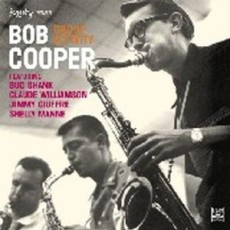
Daily Dose Of Jazz…
Bob Cooper was born on December 6, 1925 in Pittsburgh, Pennsylvania. He began to study the clarinet in high school and the following year he began working on the tenor saxophone. By 1945 he was joining Stan Kenton’s outfit when he was just 20, and as the new tenor saxophone player played alongside vocalist June Christy on “Tampico” that was to be a Kenton million-selling record. He would marry Christy two years later in Washington, DC.
Coop, as he was affectionately known, stayed with Kenton until he broke up the band in 1951. A naturally swinging jazz musician, Cooper and some other ex- Kenton men were hired to play at the Lighthouse Cafe in Los Angeles by the bassist Howard Rumsey. The Lighthouse became one of the most famous jazz clubs in the world, and the band, Howard Rumsey’s Lighthouse All Stars made history.
With a steady job he could work from home and he expanded his study of the oboe and English horn. While at the Lighthouse he made many momentous recordings, unique amongst them oboe and flute with Bud Shank, and composing a 12-tone octet for woodwind. Bob would go on to lead record sessions as part of a series of long-playing albums under “Kenton Presents” for Capitol Records.
His writing and playing on the album and its successor, “Shifting Winds” in 1955, were seminal in the creation of what was to become known as West Coast jazz. Imaginative writing and a well lubricated polish characterized the session and Cooper’s singing and stomping tenor style on his arrangement of “Strike Up The Band” boosted the record sales considerably.
Cooper would go on to tour Europe, South Africa and Japan with Christy, work as a studio musician in Hollywood, further develop his writing and compose film scores, join Kenton’s huge Neophonic Orchestra and have his composition ‘Solo For Orchestra’ premiered at one of its concerts. Much in demand for his beloved big-band work, he played regularly in other Los Angeles orchestras led by Shorty Rogers, Terry Gibbs, Bill Holman, Bill Berry, Bob Florence and Frankie Capp / Nat Pierce.
Bob Cooper, the West Coast jazz musician known primarily for playing tenor saxophone was also one of the first to play solos on oboe, passed away on August 5, 1993 in Los Angeles, California. Though maturing into one of the finest but least praised tenor saxophonists, he easily ranked with Stan Getz, Zoot Sims and Al Cohn in his talents. His last studio recording, released the year of his death, was on Karrin Allyson’s album Sweet Home Cookin on which he played tenor saxophone.
More Posts: arranger,composer,english horn,oboe,saxophone,vocal




